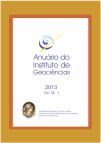Amazonian Pollen Database of Species from the Reserva Ducke, Manaus, Amazonas, Brazil
DOI:
https://doi.org/10.11137/2013_1_26_31Abstract
The Amazonian Pollen Database (APD) was implemented in 2007, becoming a very dynamic and practical tool for consulting, allowing a fast and effective resulting research in Palynology. Most of the pollen grains described morphologically and inserted into the Amazonian Pollen Database are from plants collected in the Reserva Ducke, identified and deposited in the Herbarium of the National Institute of Amazonian Research (INPA). So far the following families were studied: Apocynaceae (25 species), Asteraceae (11 species), Gentianaceae (7 species), Hernandiaceae (1 species), Lecythidaceae (5 species), Monimiaceae (1 species), Siparunaceae (5 species) and Solanaceae (1 species). Besides, the pollen grains of 10 plant species from the várzea and igapó were described. The pollen grains taken from the anthers of the INPA´s Herbarium specimens were prepared according to the method of acetolysis and the resulting slide collection was deposited in the pollen collection of the Laboratory of Palynology at INPA. The Amazonian Pollen Database (APD) contains a database of images and data on the structure of pollen grains, with detailed morphological descriptions, such as size and shape of the pollen grain, measurements of the polar and equatorial axis or the diameter, number and type of apertures, type of ornamentation of the sexine, as well as ecological data of the plant and records of the origin of the material. The palynological data and ecological plants were inserted in the program in the English language and the images are in black and white and color. By consulting the pollen morphological data inserted in the database, it is possible to make the comparative analysis of pollen samples from different research areas that include the palynology.Downloads
Download data is not yet available.
Downloads
Published
2013-01-01
How to Cite
Absy, M. L. and Rodrigues, I. D. (2013) “Amazonian Pollen Database of Species from the Reserva Ducke, Manaus, Amazonas, Brazil”, Anuário do Instituto de Geociências. Rio de Janeiro, BR, 36(1), pp. 26–31. doi: 10.11137/2013_1_26_31.
Issue
Section
não definida
License
This journal is licensed under a Creative Commons — Attribution 4.0 International — CC BY 4.0, which permits use, distribution and reproduction in any medium, provided the original work is properly cited.















